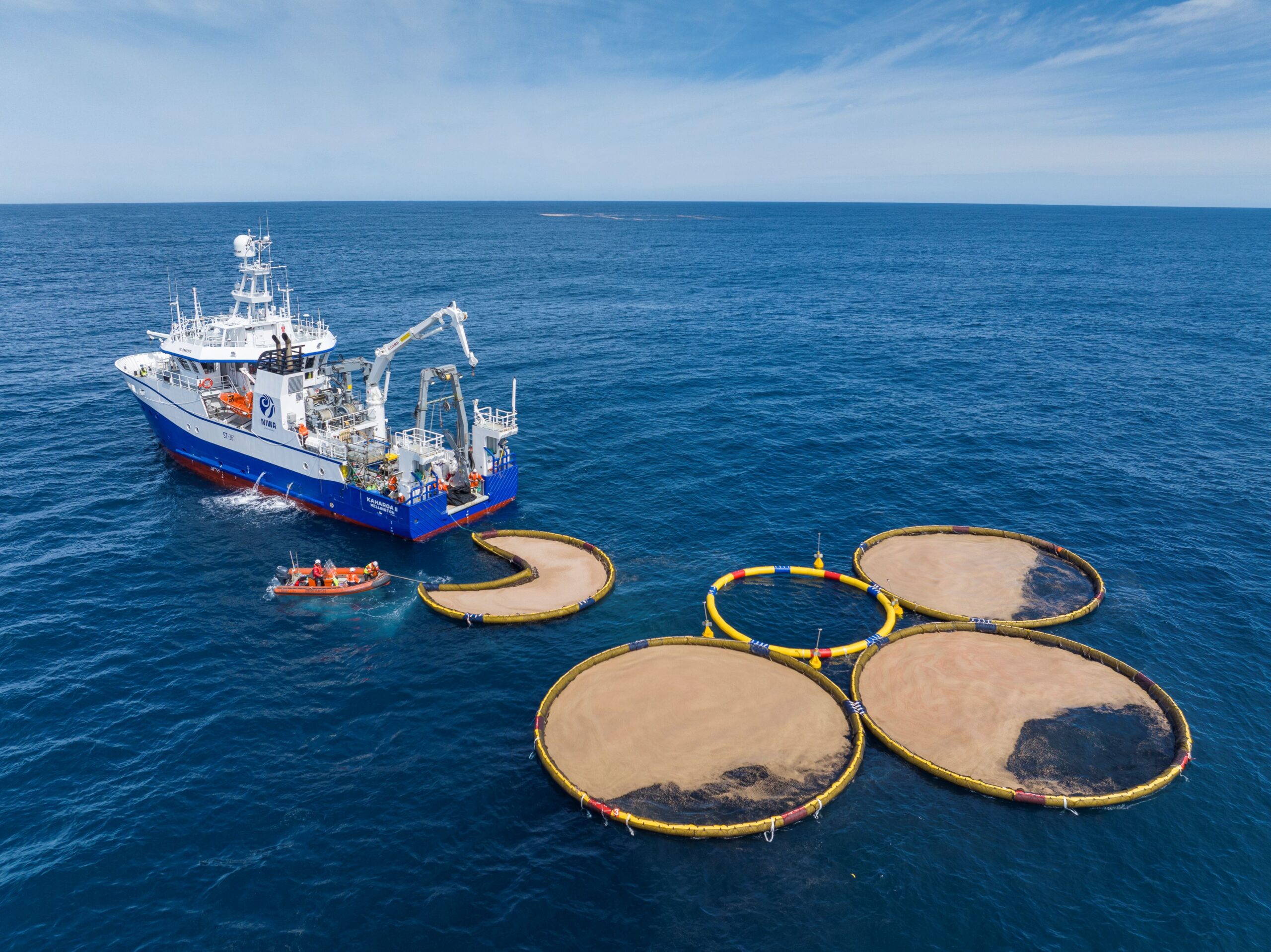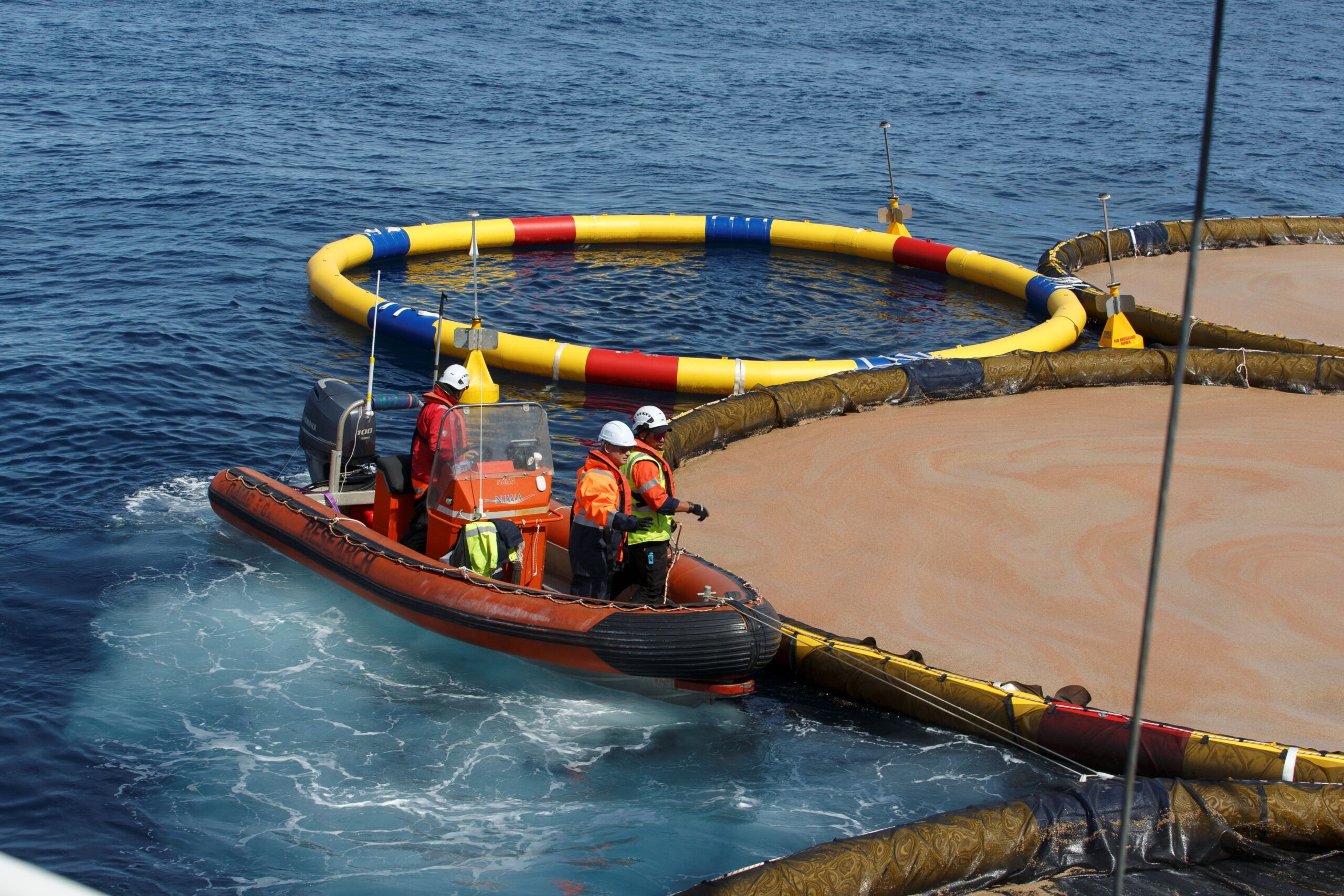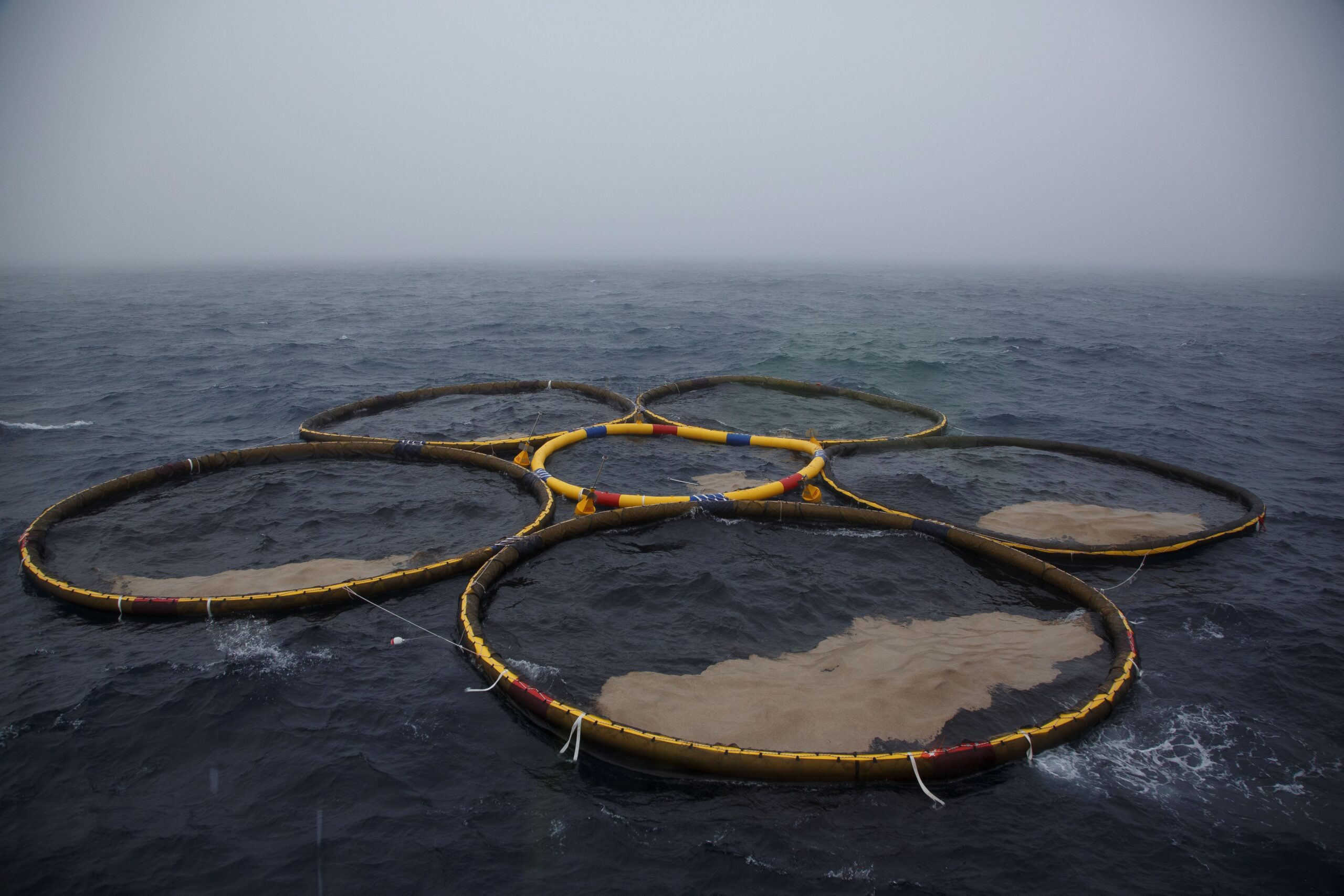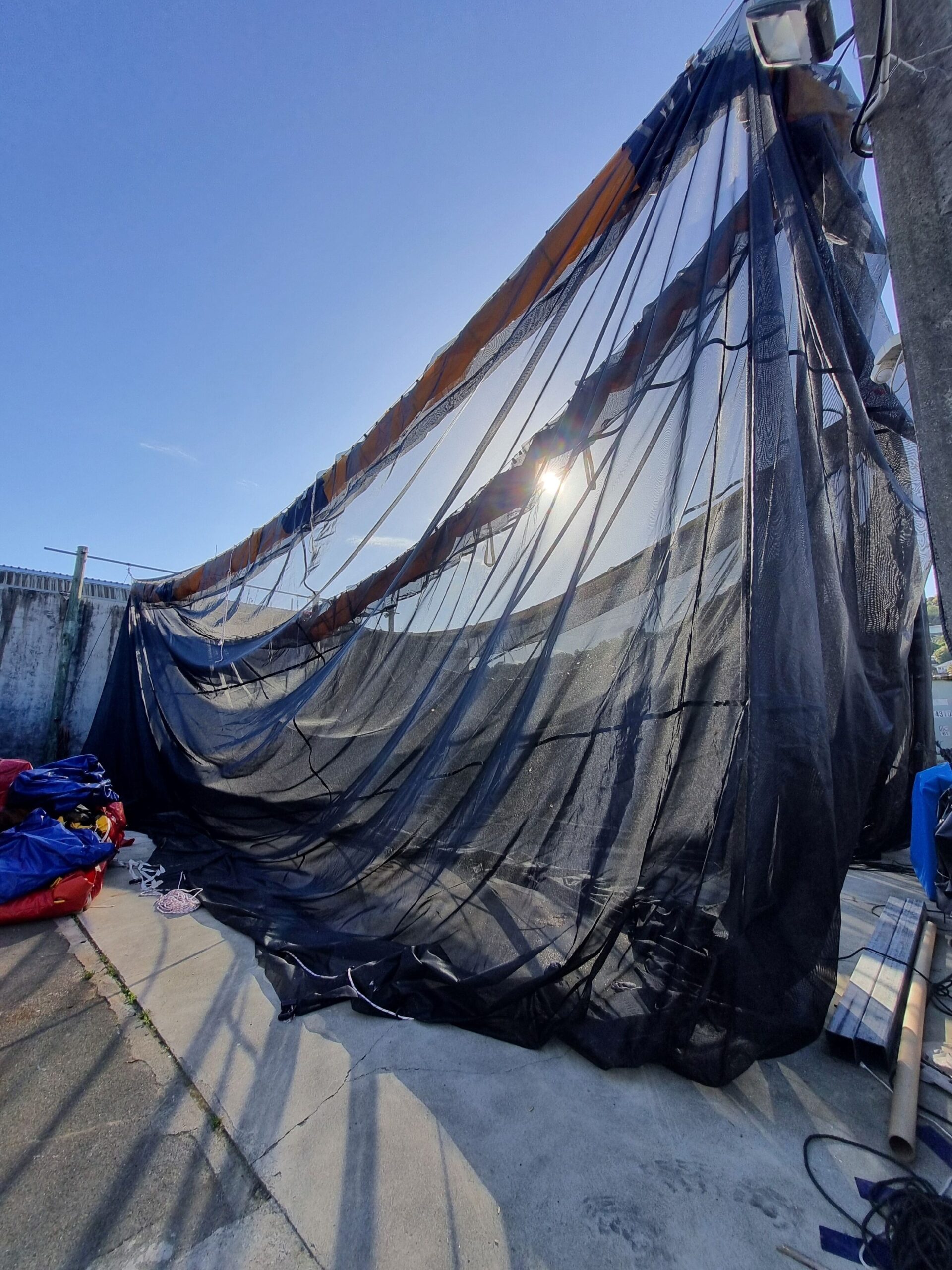TM Covers
Project name: Floating Pens
Materials Used: Truck Mesh
Materials Supplied by: Shann NZ Ltd
Installation Company: Kernohan Engineering
Project name: Floating Pens
Materials Used: Truck Mesh
Materials Supplied by: Shann NZ Ltd
Installation Company: Kernohan Engineering
What did the client request?
This project involved the design and fabrication of five large floating mesh pens and was the result of a collaboration with a large local engineering firm for their overseas client. The 13m diameter top of the pens were fabricated to enclose large buoyancy rings, the pens were designed to extend down 8m into the ocean.
The purpose of the pen was to hold a product that was being trialled as an absorber of CO2.
Webbing attachments were fabricated to allow for securing weights to the
net to help suspend the net underwater. The bottom of the mesh was drawn
in with ropes through a series of webbing loops to contain the product. The drawstring rope was contained in a pocket to mitigate propellor strike, the drawstring was designed so that the product could be released once the experiment had been completed.
The nets needed to be made to enable them to be filled and deployed from
a vessel at sea. Other challenges faced were the impact of tidal movement, as well as the effect of wind and surface waves.


What makes this project unique?
This project was a unique collaboration between local businesses. It involved
the use of almost 2000 square metres of fabric. Handing and manipulation
of the fabric alone was challenging and the initial trial fit was conducted at a
local sports field. Constraints included sourcing suitable and sufficient fabric
at a price point acceptable to our client’s customer and required a pivot mid
fabrication due to supply issues.
The design process was challenging to get a product that could be deployed
and operated from an ocean going vessel in rough sea conditions and meet
the clients exacting specifications. Fabric selection was critical to ensure the
product was suitably contained whilst allowing sea water to flow through the
nets. Other challenges faced were the impact of tidal movement, as well as
the effect of wind and surface waves.

